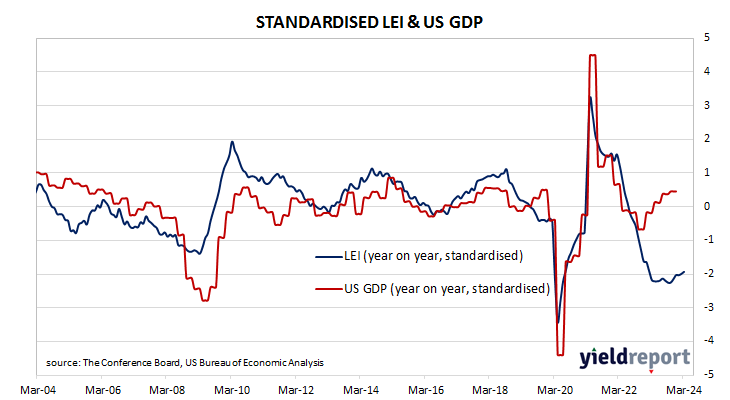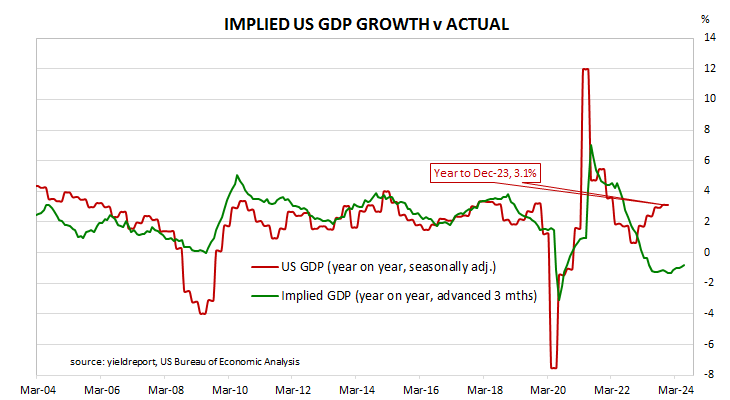Summary: Conference Board leading index down 0.3% in March, worse than expected; change driven by multiple activity parameters; US Treasury yields rise; rate-cut expectations soften; points to fragile outlook for the U.S. economy; regression analysis implies 0.8% contraction in year to June.
The Conference Board Leading Economic Index (LEI) is a composite index composed of ten sub-indices which are thought to be sensitive to changes in the US economy. The Conference Board describes it as an index which attempts to signal growth peaks and troughs; turning points in the index have historically occurred prior to changes in aggregate economic activity. Readings from March and April of 2020 signalled “a deep US recession” while subsequent readings indicated the US economy would recover rapidly. More recent readings have implied US GDP growth rates would turn negative in the first half of 2024.
The latest reading of the LEI indicates it decreased by 0.3% in March. The fall was slightly worse than the 0.1% decline which had been generally expected an in contrast with February’s revised figure of 0.2%.
“Negative contributions from the yield spread, new building permits, consumers’ outlook on business conditions, new orders, and initial unemployment insurance claims drove March’s decline,” said Justyna Zabinska-La Monica of The Conference Board.
US Treasury bond yields rose moderately across the curve on the day. By the close of business, the 2-year Treasury yield had gained 6bps to 4.99%, the 10-year yield had added 4bps to 4.63% while the 30-year yield finished 3bp higher at 4.73%.
In terms of US Fed policy, expectations of a lower federal funds rate in the next 12 months softened, although at least two 25bps cuts are still currently factored in. At the close of business, contracts implied the effective federal funds rate would average 5.325% in May, essentially in line with the current spot rate, 5.30% in June and 5.285% in July. However, April 2025 contracts implied 4.775%, 55bps less than the current rate.
“Overall, the Index points to a fragile, even if not recessionary, outlook for the U.S. economy,” added Zabinska-La Monica. “Indeed, rising consumer debt, elevated interest rates and persistent inflation pressures continue to pose risks to economic activity in 2024. The Conference Board forecasts GDP growth to cool after the rapid expansion in the second half of 2023. As consumer spending slows, US GDP growth is expected to moderate over Q2 and Q3 of this year.”
The Conference Board had previously forecast negative GDP growth in the June and September quarters of 2024. Regression analysis suggests the latest reading implies a -0.8% year-on-year growth rate in June, unchanged from the year to May growth rate.



